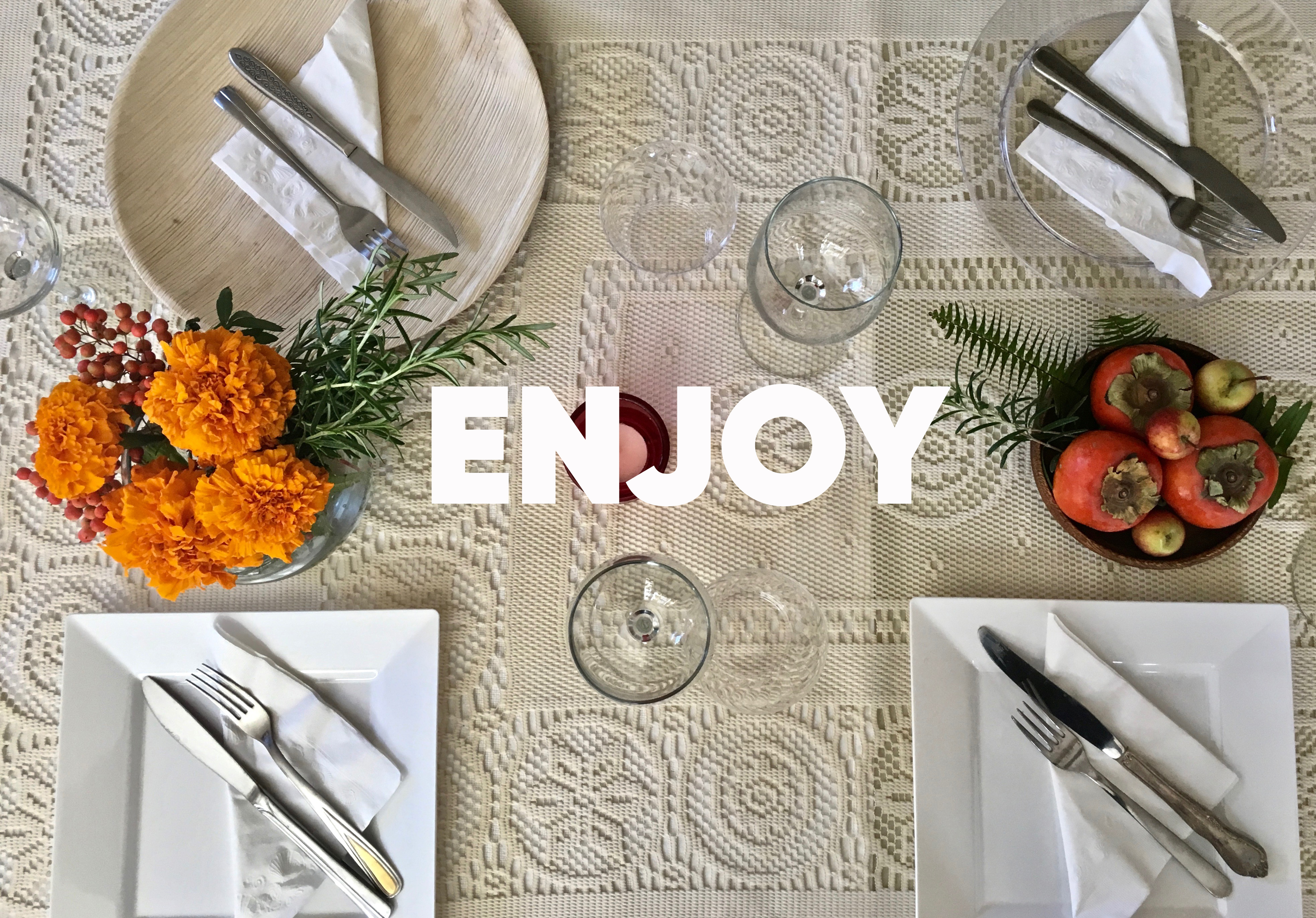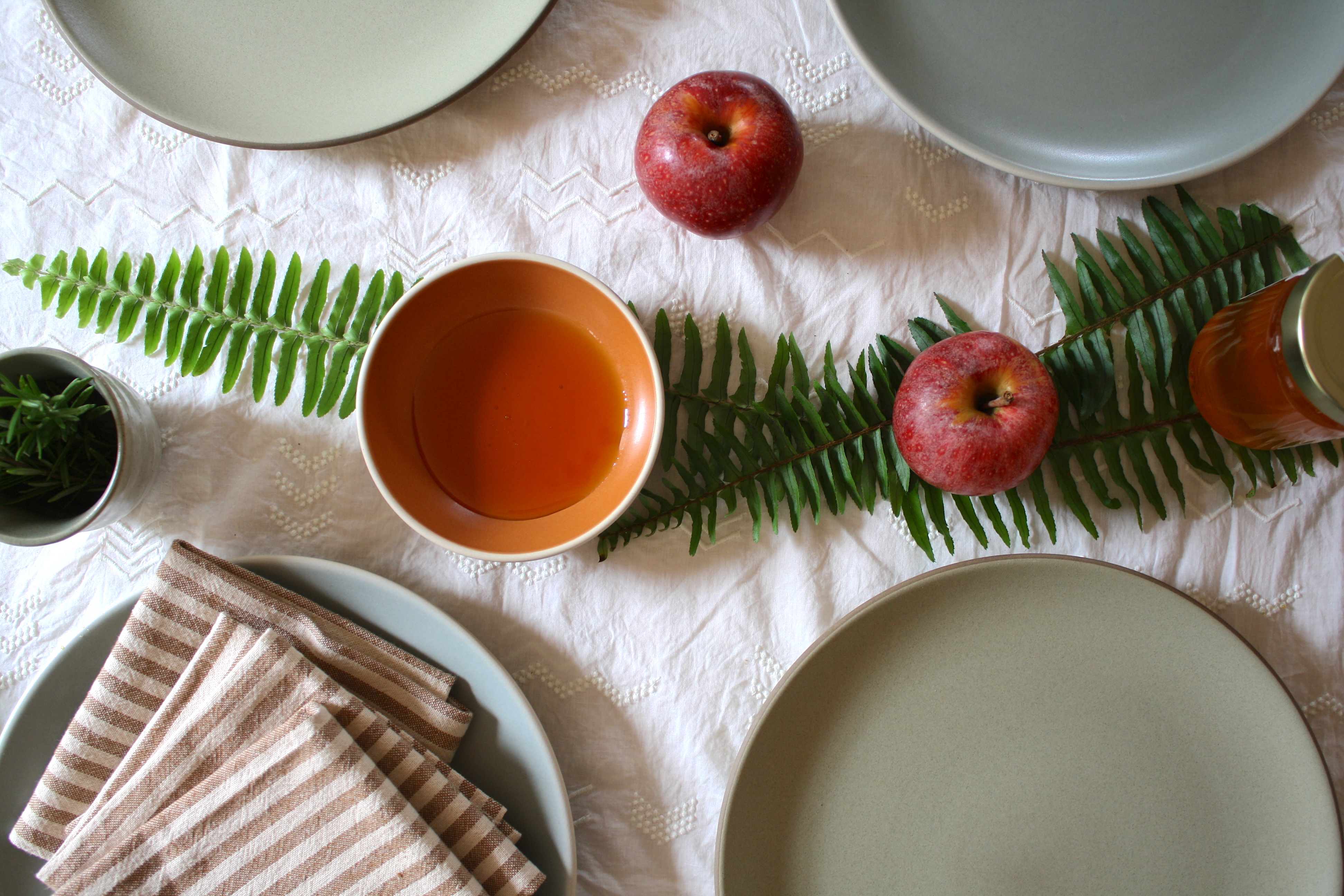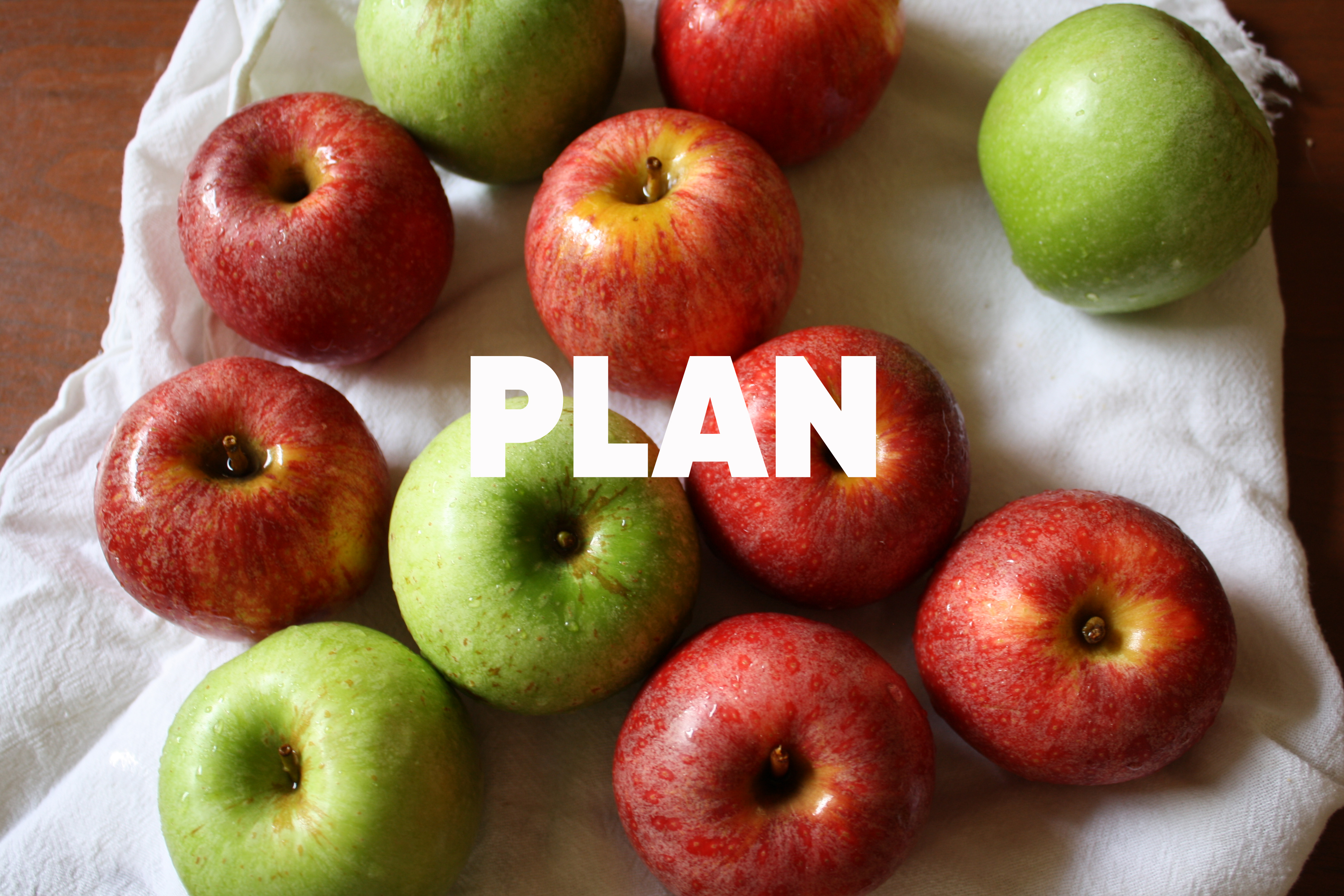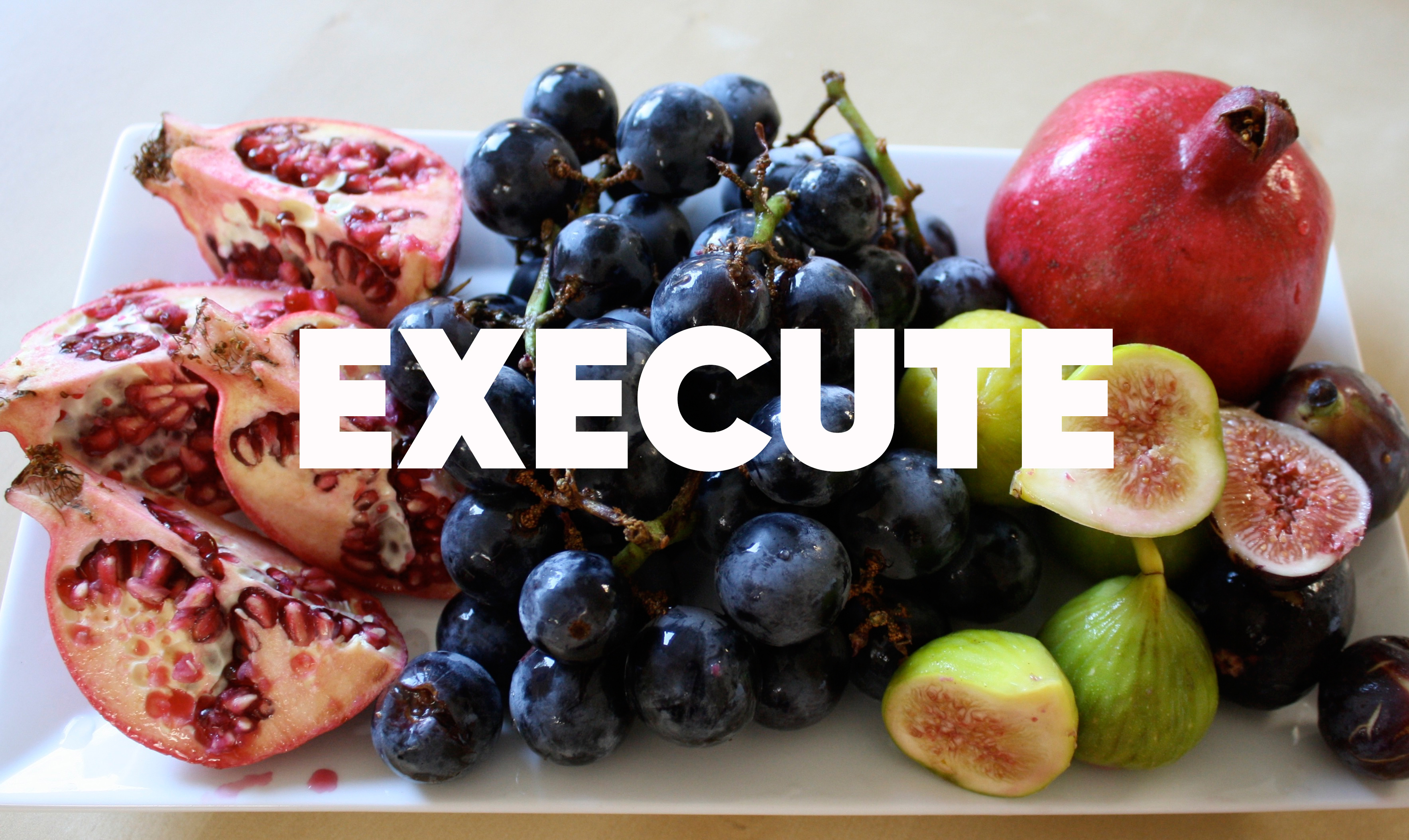The first few times I hosted Rosh Hashanah dinner, it didn’t go as smoothly as I hoped. A dish would turn out gross, or I would be a frantic hot mess getting ready, or I’d be short a chair. But even when stuff went “wrong,” I loved hosting; somehow despite the hiccups it was always fun (wine and challah help), and there is a unique joy to bringing loved ones into my home to share a meal in honor of a New Year with its opportunity for reflection, celebration, and renewal.
Every year hosting gets easier, and from my not-so-great experiences I’ve learned some tools to pass along to anyone thinking about hosting their first Rosh Hashanah dinner. Above all else, I have three core principles for hosting that matter more than the specifics:
1. A stressed out host = a stressed out vibe. The more relaxed you are and the more fun you’re having as the host, the more your guests will feel the same. Organization is your friend… your nerdy, somewhat irritating, but very necessary friend.
2. Making room at the table is a mitzvah. Without fail, every year I end up with more guests than I plan on. My parents adamantly instilled in me the belief that if someone needs a place to go, you make room at your table no matter what. Now, I plan for this so that I can have a little flexibility with last minute additions. The more the merrier.
3. Going big is not always better. A dinner party is not the time to try a menu full of ambitious dishes you’ve never cooked. Your friends don’t actually care if you make a port wine reduction sauce that is poured over a sous vide filet mignon. The point of any holiday meal is to break bread with loved ones in your home—if cooking gets in the way of that, then cook less, cook simply, or have your tribe pitch in.
From planning, to executing, to enjoying, here are my essential tips and tricks, including a menu template with links to some of my favorite recipes.
2 WEEKS BEFORE:
1. Budget. It’s the least sexy part of planning, but your budget can determine what kind of party you’re able and willing to host. Hosting can get expensive. To keep things doable I start by deciding:
• How much do I want to spend?
• What do I want to splurge on?
• Do I need help with anything?
2. Space. Before I send out invites, I think about the space I’m working with:
• How many people can I fit in my home/around my table? Comfortably v. festively?
• Do I need to borrow any chairs or folding tables? If yes, who might lend me some?
• How many spots can I keep flexible for last-minute additions?
3. Invite. Once your budget is set, and you know how many spots you’re working with, you can come up with your guest list. How you invite your guests is up to you; you can go big and design something, use paperless post, group text, email, call, or bump into someone unexpectedly and invite them on the spot.
When you start to get your RSVPs, it’s a good time to check in with your guests to see if they have any allergies or dietary restrictions. I take this info into account but not at the expense of my sanity. My rule is to be extremely mindful of allergies, and sensitive to preferences. If I have a vegan guest, I want them to feel that they can take part equally in every course. If someone has a serious allergy, I try to omit the ingredient entirely from my menu. So far no one has left the table hungry (or in anaphylactic shock).
1 WEEK BEFORE:
1. Menu. Once you know who is coming and what they can/can’t eat, you can start planning your menu.
Pre-meal bites: If you watch enough Barefoot Contessa episodes, you’ll learn that there’s no shame in having some premade elements at your dinner party; especially if it’s in the interest of your own enjoyment. When I choose to have pre-meal appetizers I look for things that are easy to throw together and aren’t too filling or messy to eat. I prefer things that are salty and crunchy and go well with an adult beverage:
• White bean hummus and crudités
• Spiced toasted pecans and an assortment of marinated olives
• Seeded crackers and tapenade
Challah/Wine/Drinks: When it comes to challah, I decide whether I want to bake it, buy it, or have someone bring it.
I like to stock up on a few bottles of wine and sparkling waters, but I also ask guests to bring wine or their favorite drink as this allows me to have one less part of the meal to worry about, and it allows them to bring something to the table.
1st Course: If it’s your first time hosting, I recommend choosing a simple first course: soup, salad, or fish. If you’re pressed for time, soup is a good option, particularly if you have time to make it in advance.
• Soup: You can’t go wrong with Ina Garten’s classic matzah ball, but for something that takes less work and is vegan, try a veggie-based soup like Nigella Lawson’s cauliflower turmeric soup.
• Salad: Ottolenghi’s spinach and date salad is one of my favorites, and I also like doing something very seasonal like Serious Eats’ arugula, apple, and pomegranate salad.
• Fish: If you’re feeling traditional and have a little extra time, there’s this outstanding gefilte fish recipe from the Gefilteria. For an easy option, I like to make a simple platter of lox, thinly sliced veggies, and lemon wedges. You can find great lox and gravlax at delis and supermarkets, but homemade gravlax is easy to make, too.
Main Course: For my main course I pick 1 protein, 1 vegetable, and 1 starch. I make sure any guests with dietary needs can have at least 2 of the 3 dishes so that everyone is satisfied.
Braising is my go-to style of cooking for dinner parties. Braising involves cooking something over low heat, slowly, in some kind of liquid. The best part of a braised dish is that they almost always taste better when they’re made 1-2 days ahead of time, and they can be simply reheated on the day. This reduces the amount of time-sensitive cooking you’ll have to do.
• Brisket: A High Holiday staple for good reason, but it doesn’t have to be a tough piece of meat that is sickly sweet. This Tyler Florence recipe works like a charm, and is a go-to in my arsenal. For vegetarians and vegans, a vegetable tagine is a great option.
• Vegetable: Simply roasted vegetables are my favorite side, and they can be easily gussied up with fresh herbs and spices. My trick is to make them before guests arrive and serve them at room temp. On Rosh Hashanah, instead of traditional tzimmes, I love to roast carrots drizzled with honey.
• Starch: Rice, potatoes, couscous, quinoa, or classic kugel. Pick any one starch you feel comfortable making. And when in doubt, keep it simple.
Dessert: A High Holiday meal isn’t complete without something sweet. Even if I’m baking, I always like to have a fruit platter as an option at the end of the meal. Fruit and berries served with ice cream is a great easy dessert in and of itself. But if you’re excited to bake, here are some of my go-to High Holiday desserts:
• Classic honey cake is closest to my own grandmother’s recipe and it has the perfect texture.
• Apple sharlotka is a classic Russian dessert, and this recipe comes from Deb Perelman’s in-laws, who got it from their parents before them.
• Baked apples with ginger from David Lebovitz is ideal for those looking for a healthier and very appropriate treat.
2. Potluck Option. If this all sounds like too much, then there’s always the option to potluck. If you’re going that route you’ll want to guide your guests. You could focus on making the main course and one other dish, and then divvy up the rest of the list, making sure all courses are covered.
3. Game plan. Even after hosting and catering dozens of holiday meals, once I set the menu I still make a detailed schedule and to-do list for each party—sometimes, I even break up my to-do list by the hour. Setting a schedule saves me every time.
5-6 DAYS BEFORE
1. Shop. I shop for the party the Sunday before the dinner: it’s when I go to the farmer’s market, and it’s also when I have a day off and more free time. Some things are best bought as fresh as possible, and I’ll keep a separate smaller list for those items for a quick trip closer to the day.
2. Home improvement. That same Sunday is a good time to do any major cleaning or organizing that you want to do before your guests show up. It’s zero fun to be running around frantically cleaning in the moments before there’s a knock at the door (I learned this the hard way).
3. Playlist/Decor. The week before the party is a great time to think about all the extras you want: music, decorations, table settings, etc.
• Playlist?
• Flowers or table decorations?
• Linens? Candles?
• Glasses/Plateware/Napkins/Utensils?
4. Jewish Stuff. Depending on your level of observance, figure out which aspects of Jewish tradition you would like at your meal: from blessings, to songs, to a spiritual discussion. I often have non-Jewish or not-comfortable-with-Jewish-stuff guests at my table, and I have found that it is useful to explain any Jewish rituals before performing them so that everyone knows what’s going on and can feel more comfortable and included.
2-3 DAYS BEFORE
1. Prep
• Wash and prep vegetables and herbs
• Make soup (if serving)
• Make anything that can be made 2 days ahead of time
2. Extra shopping if needed. Are there last minute things you need to pick up? Go through your menu again and double check what you have.
3. Follow-up. Follow-up with your guests to confirm attendance and make sure they have all the necessary info to get to your place.
DAY/NIGHT BEFORE
1. Prep and Cook
• Make dessert
• Make any side that can be made day before
• Braise the main course (if braising)
2. Set the table. Setting the table the night before will help you get ahead the next day. Alternatively, I’ll have a close friend come early to help with setup.

DAY OF
1. Cook. I love being in the kitchen the day of a party. I think this is where the enjoyment of entertaining really kicks in. There’s an excitement to putting all the pieces together, and the joy that comes from crossing stuff off your to-do list.
• Prep pre-dinner platters
• Prep challah and apples + honey
• Assemble the salad/fish course
• Make any dishes that need to be made day of
• Heat up dishes you made in advance
• Prep any garnishes you might need
2. Getting yourself ready. Set time aside for YOU. You’ll likely want to get dressed, shower, eat a snack, or just sit down and scroll through your Instagram feed a few minutes before everyone shows up.
3. Setting the mood. Once the food is made and you’re feeling ready to open the door, do any final things to set the mood: put on music, light candles, finish setting the table.
4. Relax. Hopefully, with all the planning you are feeling prepared and ready to host. Take a moment to enjoy the peace of a house full of good smells that is about to be full of good people.
Shanah tovah, and may your year be filled with tables full of friends and family breaking bread together.





